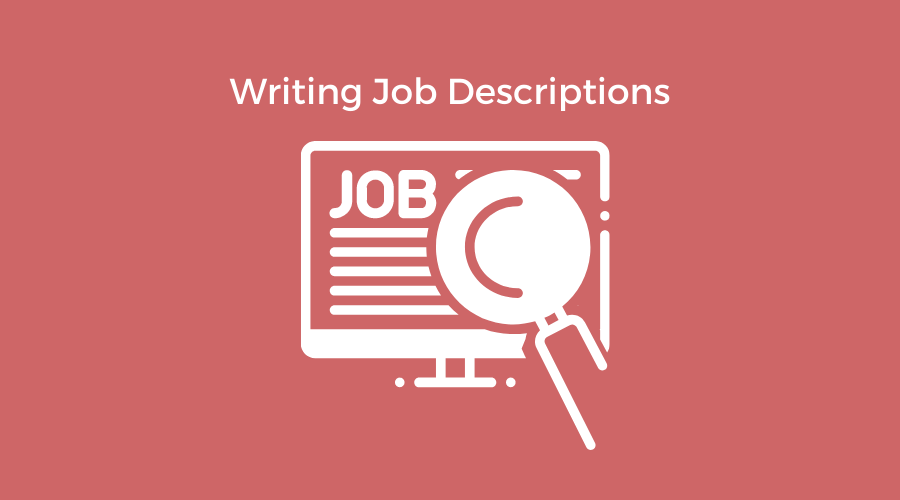92% of small businesses say they get few or no qualified applicants. So how can you change that dynamic? Better job descriptions may help.
Hiring quality talent has never been easy, but since the Great Recession ended a decade ago the difficulty has multiplied. Now, as the headline statistics above suggest, the COVID pandemic had made it harder still to hire workers with the skills employers want.
To entice candidates to apply, employers are offering signing bonuses and referral fees, sweetened benefits and pay and flexible schedules and remote work. Yet too many are overlooking one, simple and inexpensive way to attract applicants – a better job description.
Writing job descriptions for attracting quality talent gets too little attention, yet for the majority of candidates, it’s the job description that makes them decide to apply or move on to the next opportunity.
The Job Description is an Advertisement
Talent management strategist Dorothy Dalton laments that most job descriptions don’t get changed much, while jobs do. When an opening comes up, the job description from the last time is dusted off and reposted. “Generally the only changes I see are to inflate the qualifications.”
Ongig, a job description technology company, tells us there are at least a dozen reasons why a job description fails. Job titles are too long or too obscure. A majority begin by telling potential candidates about the company rather than the job. Too many read as if written by lawyers and are too complicated or impersonal. Others are too long. Still others are laden with gender-biased language like “go-getter,” “dominant” and “champion.”
Writing job descriptions for attracting quality talent isn’t difficult. It starts with an appreciation of some of the science behind what gets a candidate interested in actually reading a job post, which, of course, is the first step in getting them to apply.
LinkedIn says job seekers spend less than 50 seconds deciding if a job is a fit. They spend well over a minute reading through one that appears to match their interests and skills.
The first place they look is the job title. If it’s more than 60 characters – that’s characters, not words – few candidates will click it to apply, according to an analysis by Appcast, a global recruitment ad placement company. The same is true if the title is shorter than 20 characters.
LinkedIn points out that words like “wizard,” “rock star,” and “guru” in the title may be cute, but they don’t give a job seeker anything specific about the job. “Data Analyst” is more effective than “Data Guru” because it’s immediately clear what the job is.
“A poorly written job title might puzzle the candidate so much that they don’t click through to read your job description,” explains Ongig.
The Long and Short of Job Titles
Just as job titles can be too long or too short, Appcast found the same applies to job descriptions. The sweet spot to get the highest percentage of candidates to click to apply are job descriptions between 4,000 and 5,000 characters. That’s around 500 words.
Ironically, ZipRecruiter found the average job posting in 2019 was 70% longer than it was in 2016. That’s not necessarily a negative if the job descriptions were too short in the past and now provide more specific and helpful information.
Even more important to writing job descriptions for attracting quality talent are the qualifications. The issue of qualification inflation is a key obstacle to getting candidates to apply. One of the leading studies of the issue by the Harvard Business School compares the educational requirements in job postings with those held by the people actually doing the work.
In just one example, the researchers found that 67% of the job postings for production supervisor asked for a college degree. Yet, of those doing the job – foremen and other first line managers — only 16% had a degree.
“By engaging in degree inflation, employers restrict their access to a wider pool of talent in several ways,” the report says. “Postings for many jobs traditionally viewed as middle-skills jobs now stipulate a college degree as a minimum education requirement, while only a third of the adult population possesses this credential.”
It isn’t just education requirements that are inflated. ZipRecruiter’s study of the millions of its job postings found that as the unemployment rate was creeping lower between 2016 and 2018, employers were including more skills in their requirements.
Not only does this narrow the pool of qualified candidates, it has an effect on who will apply for the job. Women won’t apply for a job unless they meet most or all of the qualifications. Men will apply if they meet 60%.
In writing job descriptions for attracting quality talent the first step should be to analyze what qualifications are really necessary.
Remember that headline at the beginning of this article about tech executives worrying they won’t find enough qualified people to hire? CNBC’s survey found they’re adopting hiring strategies that are an about face from their past practice.
Besides instituting training and apprenticeships, a quarter are eliminating academic requirements, while 42% are rewriting their job descriptions and titles entirely.
To interest more candidates and get more applicants, update those job descriptions to bring them into line with what’s really needed to do the job. Tighten up the inflationary skills and requirements, use gender-neural language and keep your job titles clear and short. Be specific about what the job is, but avoid delivering a laundry list of tasks. Instead, prioritize what’s crucial and what makes the job fulfilling.
Writing job descriptions for attracting quality talent should be like speaking to the candidate as if they were right there in front of you. Spell out the good (and the not so good) aspects of the job to paint a realistic picture for potential candidates. When possible also use imagery and graphics to highlight the job in action. It’s a visual web and sometime job writers forget the appeal of pictures and images to sell the role.
Contributions by John Zappe


